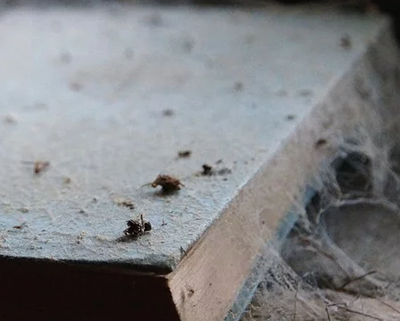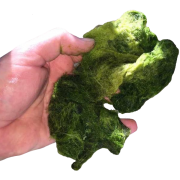Older version User’s Manual
I haven’t had much free time to update this manual for the Rev 4. Actually, the PDF attachment to this Article is the Rev 1 manual with strikeout edits to take out what no longer applied to the Rev 2 and Rev 3! I never updated the manual for that version either….
However, here is the updated information that is specific to the Rev 3, with some notes about the dimmable driver boards.
NOTE: THIS MANUAL ONLY PARTIALLY APPLIES TO THE CURRENT VERSION (Rev 4)
Please see the main page of the Support Page for all current Articles
Rev 3 Specific Notes:
DRAINS
Rev 4 owners: click here instead > Drain Control Valve (inline flapper valve)
The threaded adapters go into the appropriate drain holes. There are two 12″ sections of pipe included, cut these to fit as follows:
Cut 1.25″ pipe so that side drain is near the surface of operating water level. I usually do this above the water surface so that if for some reason it is running a lot, you hear it.
Cut the 1.5″ pipe such that you can position the valve so that it drains out right below the water level, up to about 1-1.5″ below the surface. Alternatively, you can just submerge one end of the valve.
Applicable for the Single-Union Ball Valve only: The drain valve has no metal parts and is fully submersible. Tightening the valve nut will “lock” the valve in position, so “tune” the drain flow as desired, then tighten the nut a bit. To adjust, loosen the nut until the valve moves easily, then re-tighten.
If bubbles coming out of the scrubber are an issue, use the included filter sock and 2 zip ties. Connect the 2 zip ties together to make a larger one – run them through the filter sock handle first, and then “hang” this from the handle of the ball valve. Tighten the zip-ties until the top of the filter sock is at or just below the sump water level. You don’t need all of the water to run through the sock, you are just using the sock to force bubbles to the surface.
A note on bubbles – these will be less of an issue as the screen matures. Unit noise will also fade as the screen matures (related to bubbles).
WATER SUPPLY & SLOT PIPE
Rev 4 owners: click here instead > Bonding PVC to ABS using Transition Cement
The water supply/inlet can be performed a few different ways, using the included parts:
You can screw the thread-to-barb elbow directly into the threaded hole and then attach the vinyl hose to that, or you can use the double-threaded adapter, with the union screwed onto that, and the elbow screwed into the union. Either way, you want to screw in the adapter so that you have right around 1/4″ of the threading exposed inside the box. You will not need to adjust this during cleaning (you will likely never adjust this part again)
The screen (if you haven’t found it) is packed in front of one of the light fixtures. Remove the light blockers, insert the screen into the slot, and rotate the rings so the “gap” is on top.
Next, insert the slot pipe into the box, seat one end on the threaded adapter you already installed, and lower into place (the thumbscrews will cradle the pipe. Now, screw the gray plug (gray cap with the threaded fitting) into the other hole. Hold the slot pipe with the screen vertical and tighten the gray plug. To remove the pipe, unscrew the gray plug until you can slide the slot pipe assembly slightly, then lift it out.
With the slot pipe secured, start the water flow and verify that there is no water spraying or dripping out of the ends of the pipe. Tighten the gray plug if necessary. The o-rings inside the ends of the slot pipe should seal up the assembly. Extra o-rings are included with your scrubber, should you lose one. Install the light/spray blockers, and rotate so that they are not diverting the flow. Place the lid on the unit.
LED LIGHTS
Rev 4 owners: click here instead > LED Fixture Setup and Operation
It’s pretty straight forward:
For the L2, connect the power supply to the fixture with the 2-port connectors, connect the 2 fixtures together with the 4-port connector, and off you go.
For the L4, connect one power supply to each fixture, and plug in the power supplies.
The following section is specific to the Rev 2 and Rev 3 models with the v1 LED boards (which contains jumper terminals between the pairs of LEDs)
The v1 LED boards have jumpers between each LED pair, which allows you to increase the intensity once you have a base of growth. The jumpers come pre-configured in the “low” intensity setting (meaning, all LEDs are in “parallel” – which splits the current between the 2 LEDs of each pair).
DO NOT CONFIGURE JUMPERS WITH POWER APPLIED TO THE LEDs. Doing so will void the warranty on the LED boards (because you will blow out all of the reds, instantly)
The Blue pair should always remain in Parallel – do not change the blue jumper position on any of the boards (this is the centermost jumper block)
Each red pair can be set to ‘high’ intensity by removing the pair of jumpers and plugging one jumper across the middle set of pins between each pair.
To change the jumper settings, unplug the driver from the wall and let the fixture sit for 30 seconds, then unplug the driver from the fixture. Remove one end cap of the MakersLED heat sink by removing the 4 screws, and remove the acrylic splashguard. Configure the jumpers as desired, then re-assemble the fixture.
The following section is specific to the Rev 4, or to a handful of Rev 3 models I sold that contained the driver board (these can be identified by the presence of a dimming knob on the back of the heat sink)
The potentiometers on the driver board (called SMD, or Surface Mounted Device, potentiometers) are pre-configured with the reds at 100% and violets at 50%.
On the back of each fixture, there is an external dimming knob (potentiometer). This will dim all the LEDs in unison, in proportion to the setting of the SMD potentiometer. So with the default setting, if you turn the external knob to 50%, the reds will be at 50% and violets at 25%. The dimming knob should be set at 50% or less initially. This can stay at that level for quite a long time, for some, indefinitely.
An important note: the external dimming knob is a specific type called an Audio Taper Potentiometer, which allows for very linear operation, but it works OPPOSITE of what you would expect. Turn all the way left (counterclockwise) to obtain maximum intensity, turn the knob all the way right (clockwise) to obtain minimum intensity (about 10%). The knob is removable, but is shipped such that the 12 o-clock position is 100%. With this reference point, 10% is at about the 11 o-clock position, so 50% should be near the 5 o-clock position.
As for the number of hours/day to run the LEDs, in the past, my recommendation has been 9 hours/day max at first. However, with the dimming knob function, you may be able to further reduce the intensity to a level where you can run for longer hours (18, 20, 22, or more) without causing “photosaturation” – which is when you have no algae growth, and way too much light. Write down your intensity and duration settings and then note the resulting growth a few times a week, and take pics if you want. You can text pictures to me at (my cell phone number is on the invoice that came with your scrubber) if that is more convenient than e-mailing them. I will provide feedback and you will be helping me establish useful guidelines.
I would recommend initially setting the dimming knob in about the 6 or 7 o’clock position, and running the LEDs for 12 to 14 hours/day for the first week. For the second week, 6 o’clock position, 14 hours/day. By that time, you should need to do your first cleaning, which is just a swipe of your palm across the screen, and a very light rinse with slow running, room temperature tap water (or, just pour a cup of tank water over the screen after the palm-swipe). Then, continue with the 6 o’clock / 14 hrs/day for another week. Depending on growth, you may be able to increase intensity a bit. As I get some feedback on these recommendations, they may change.




